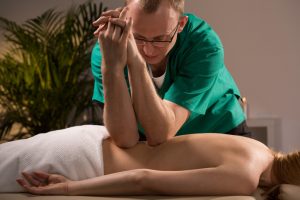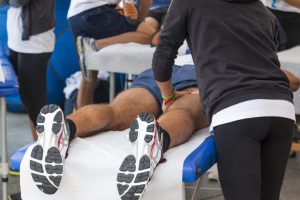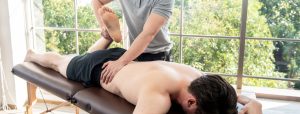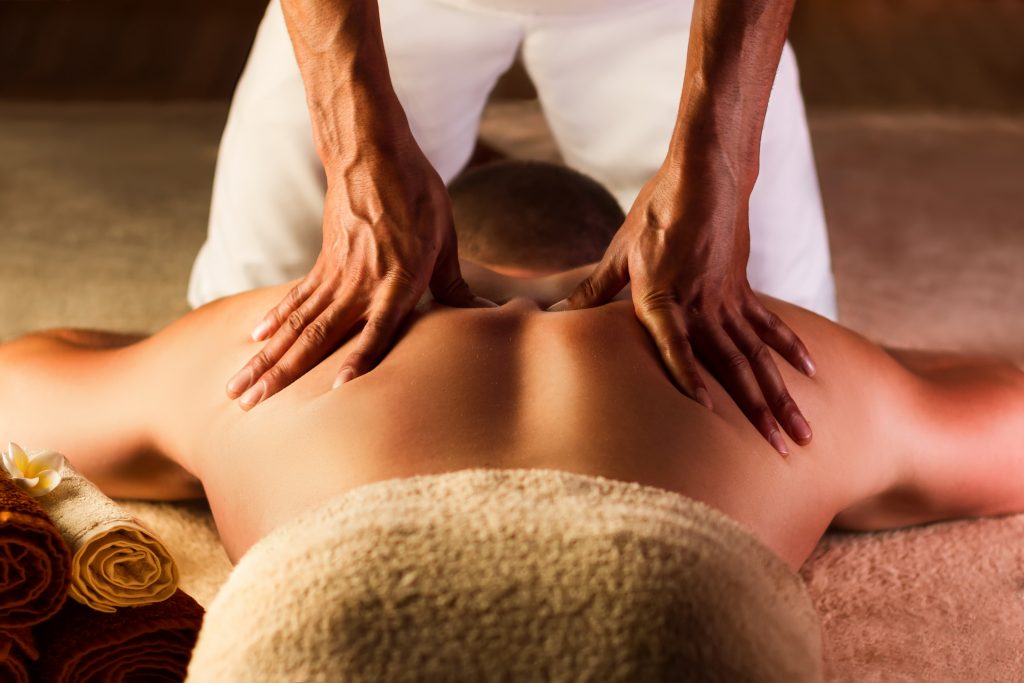Did you know there’s a big difference between a sports massage and a regular one? This post goes into the benefits of a sports massage, what to expect, and when to get one.
What is Sports Massage?
Sports massage is defined as “A mechanical manipulation of the body tissues with rhythmical pressure and stroking to promote health and well-being” (Galloway et al., 2004).

It is widely used in both professional amateur sports. It’s often used to aid tissue repair and injury preventions. Plus, sports massage is a way to ho heal existing injuries. Examples include lower back pain and pulled hamstrings.
There’s always a debate as to whether massage just has a placebo effect. It’s a known fact that it makes you feel better within yourself. However, this isn’t the only benefit of a sports massage.
The Benefits of a Sports Massage
Sports massages can enhance recovery after exercise, as they help repair muscle damage. Up to 45% of the total time in physiotherapy for sports-related injuries involves sports massage (Best et al., 2008).
The benefits of a sports massage also include increasing blood flow. This happens through applying mechanical pressure on skin tissues (Hume and Kolt, 2012). When arriving for your sports massage always make sure you drink a lot of fluid. The more hydrated the skin and muscles, the smoother your massage.

One of the lesser acknowledged benefits of a sports massage is education. Your therapist will often teach you how to do specific stretches at home. They might also give you other tips.
According to the American Massage Therapy Association (2019), sports massages help in all of the following ways:
- Relief of muscle tension
- Relief of muscle stiffness
- Faster healing of strained muscles and sprained ligaments
- Reduced muscle pain
- Reduction in swelling and muscle spasm
- Greater joint flexibility
- Enhanced athletic performance
Relaxation Massage Versus Sports Massage
There’s a big difference between having a sports massage and a relaxation massage. With relaxation massage, the aim is to encourage a state of calm. But sports massage treats dysfunctional issues in your muscles. For example, your therapist will normally include some deep tissue massage. The strokes are much deeper to target muscles damaged due to injury.

Now you know what a sports massage is, and the benefits. Let’s look a bit closer into what’s involved and what to expect if you have one.
What To Expect in a Sports Massage
Sports therapists will combine many different techniques depending on your symptoms. They use many in one session, and each contributes to the benefits of a sports massage (Moraska, 2005).
Effleurage
This will include things such as single hand, reinforced hand, and double hands. Alongside this, it can involve the use of alternate hands and forearms. Therapists use this type of massage right at the start to introduce touch. It also helps warm up the muscles.
Petrissage
This includes wringing and kneading. Therapists use the thumbs, fingertips, palms or knuckles. These all promote more elasticity in your muscles.

Myofascial Release Techniques
Thes are direct or indirect. This technique involves taking a muscle through a range of motion while applying pressure down and through it.
Soft Tissue Release
These techniques relieve tension in the muscles. A soft tissue release technique includes a stretch while massaging.
Trigger Point Technique
A trigger point is a painful, hypersensitive spot found while massaging a muscle. These sometimes feel like a nodule or knot. When pressed they elicit a twitch response or pain. A therapist releases these spots by applying direct pressure to them. A therapist usually holds this pressure for 6-10 seconds before relief is felt.
Muscle Energy Techniques (METS)
These are added into a massage to increase flexibility in a muscle. METS are very similar to PNF stretching. These stretches are held while you’re asked to resist. As you breathe in and out, the therapist will increase the stretch. Sports massage is particularly popular in gymnasts. It helps to train the stretch receptors of muscle spindles to grown in length.
Therapists combine each of the techniques above to give different benefits of a sports massage. However, the timing of your massage can determine how much it helps.
When To Have a Massage?
If you’re new to massage, it’s essential that you book a massage in at the right time. This is because you’re likely to experience some muscle soreness up to 48 hours after. For example, runners should not book a massage the day before a big run or race.

If you’ve had sports massages before, then you should book one after an event or training to aid recovery. The benefits of a sports massage here include helping the body return to its natural repair state faster. It can also calm the nervous system.
Frequency and Duration of Your Massage
The majority of elite athletes will have a massage twice per week. For most amateur athletes, once every two weeks is fine. On the other hand, people who do regular exercise but not to an athletic level should aim for once every 3-4 weeks.
A massage should last between 30 minutes to an hour. But the duration of a sports massage is dependent on the area focused on. For small areas then a 30-minute massage would be sufficient. Examples include on the calves, a foot or a shoulder.
However, if you’re looking for a full back massage, an hour is more suitable. An hour would also be ideal for your first appointment so that the massage therapist can do an extensive consultation (Best et al., 2008).
Summary
To summarise, the benefits of a sports massage include speeding up recovery and healing times for sports injuries. For athletes, sports massage is especially useful for in-between training sessions. If you are thinking of having a sports massage, attend a consultation beforehand to gauge what you want to achieve from your massage.

Further Reading
Are you prone to injury? Sports massage helps, but prevention is better than cure! Read about how to avoid injuries during exercise here. Gymnasts often have sports massages. Training like a gymnast has many benefits – learn about it here.
